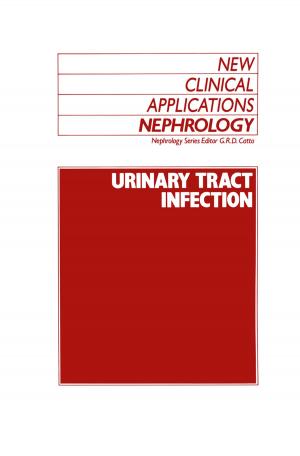Cardiovascular Genetics for Clinicians
Nonfiction, Health & Well Being, Medical, Medical Science, Genetics, Specialties, Internal Medicine, Cardiology| Author: | ISBN: | 9789401010191 | |
| Publisher: | Springer Netherlands | Publication: | December 6, 2012 |
| Imprint: | Springer | Language: | English |
| Author: | |
| ISBN: | 9789401010191 |
| Publisher: | Springer Netherlands |
| Publication: | December 6, 2012 |
| Imprint: | Springer |
| Language: | English |
All physicians practicing medicine encounter patients suffering from cardiovascular disease. This book has been outlined in such a way that vascular surgeons, general internists, neurologists and cardiologists should be able to use it. The book covers the complete scope of cardiac diseases in addition to chapters on hypertension and atherosclerosis. In many patients there is a family history of cerebrovascular accidents, myocardial infarction or peripheral arterial disease. Also in patients reporting collaps, palpitations and arrhythmias the family is crucial and can provide clues to a genetic cause of the disease. This book is published to guide physicians in the process of determining whether a genetic component is likely to be present. Furthermore, information is provided what the possibilities and limitations of DNA diagnostic techniques are. Finally, the importance of newly identified categories of potential patients, i. e. gene carriers without symptoms or any inducible sign of disease, is highlighted. For some patients a genetic diagnosis is essential to determine appropriate therapy and for counseling? In some other diseases DNA diagnostic tools are available but the relevant for the patients may be less clear. In other families the search for a disease causing gene is ongoing and the possibilities to find genes and to unravel the pathophysiology of the disease is limited by the lack of patients. To give insight into the current state of genetic diagnostics, the authors have classified the cardiovascular diseases.
All physicians practicing medicine encounter patients suffering from cardiovascular disease. This book has been outlined in such a way that vascular surgeons, general internists, neurologists and cardiologists should be able to use it. The book covers the complete scope of cardiac diseases in addition to chapters on hypertension and atherosclerosis. In many patients there is a family history of cerebrovascular accidents, myocardial infarction or peripheral arterial disease. Also in patients reporting collaps, palpitations and arrhythmias the family is crucial and can provide clues to a genetic cause of the disease. This book is published to guide physicians in the process of determining whether a genetic component is likely to be present. Furthermore, information is provided what the possibilities and limitations of DNA diagnostic techniques are. Finally, the importance of newly identified categories of potential patients, i. e. gene carriers without symptoms or any inducible sign of disease, is highlighted. For some patients a genetic diagnosis is essential to determine appropriate therapy and for counseling? In some other diseases DNA diagnostic tools are available but the relevant for the patients may be less clear. In other families the search for a disease causing gene is ongoing and the possibilities to find genes and to unravel the pathophysiology of the disease is limited by the lack of patients. To give insight into the current state of genetic diagnostics, the authors have classified the cardiovascular diseases.















